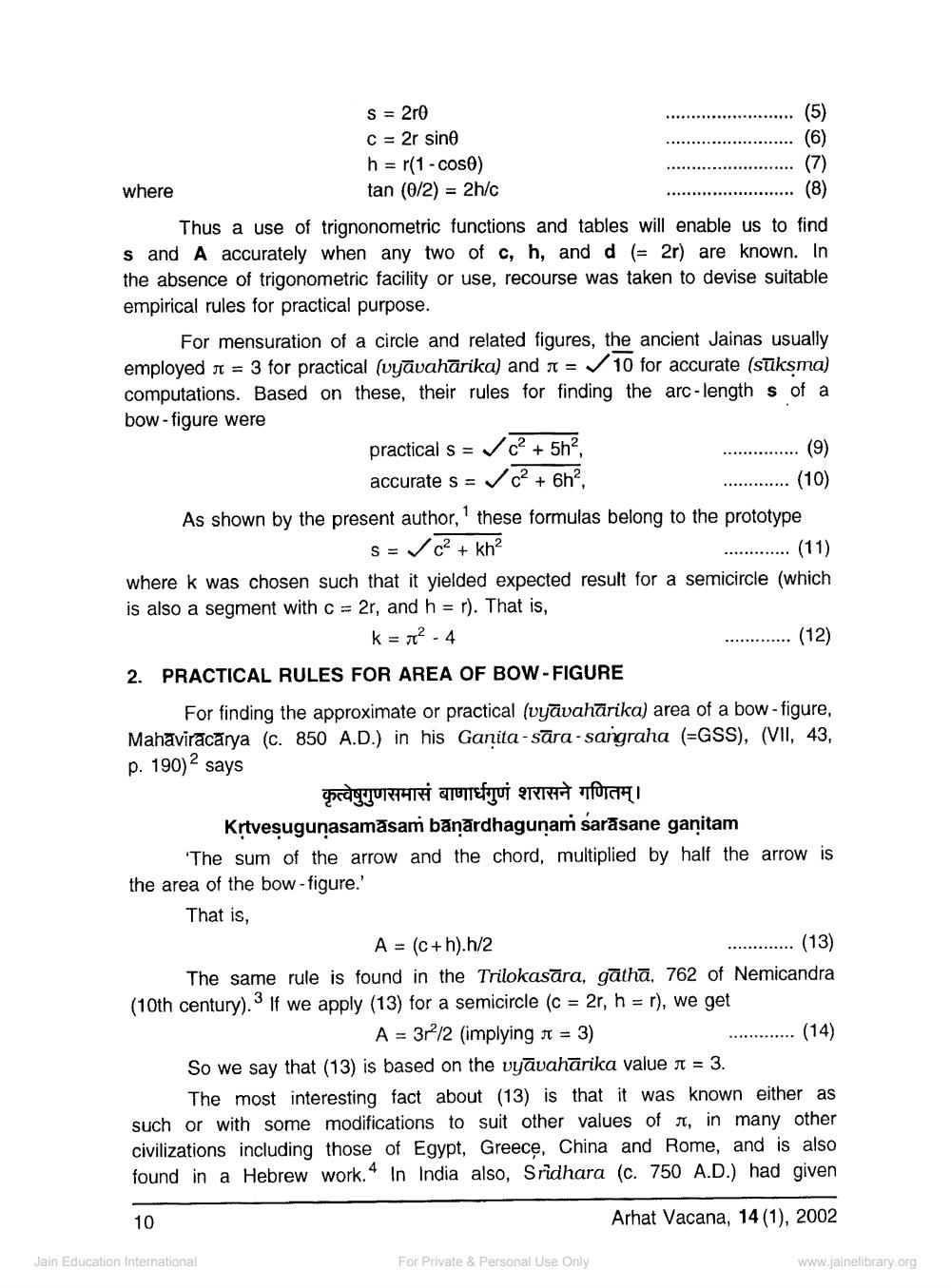________________
S = 20 C = 2r sine
h = r(1 - Coso) where tan (0/2) = 2h/c
........... (8) Thus a use of trignonometric functions and tables will enable us to find s and A accurately when any two of c, h, and d (= 2r) are known. In the absence of trigonometric facility or use, recourse was taken to devise suitable empirical rules for practical purpose.
For mensuration of a circle and related figures, the ancient Jainas usually employed t = 3 for practical (vyāvahārika) and a = 10 for accurate (sūksma) computations. Based on these, their rules for finding the arc-length s of a bow-figure were practical s= c2 + 5h2
............... (9) accurate s = c + 6h?.
............. (10) As shown by the present author, these formulas belong to the prototype S = V c? + kh?
............ (11) where k was chosen such that it yielded expected result for a semicircle (which is also a segment with c = 2r, and h = r). That is, 1. k= x2 - 4
..... (12) 2. PRACTICAL RULES FOR AREA OF BOW - FIGURE
For finding the approximate or practical (vyāvahārika) area of a bow - figure, Mahaviracārya (c. 850 A.D.) in his Ganita - sāra-sangraha (=GSS), (VII, 43, p. 190) 2 says
कृत्वेषुगुणसमासं बाणार्धगुणं शरासने गणितम्। Krtveşuguņasamāsam bāņārdhaguņam sarāsane ganitam 'The sum of the arrow and the chord, multiplied by half the arrow is the area of the bow - figure.' That is, A = (c+h).h/2
............. (13) The same rule is found in the Trilokasāra, gāthā, 762 of Nemicandra (10th century). If we apply (13) for a semicircle (c = 2r, h = r), we get
A = 3r2/2 (implying n = 3) So we say that (13) is based on the vyāvahārika value a = 3.
The most interesting fact about (13) is that it was known either as such or with some modifications to suit other values of t, in many other civilizations including those of Egypt, Greece, China and Rome, and is also found in a Hebrew work.In India also, Sridhara (c. 750 A.D.) had given
.
... (14)
10
Arhat Vacana, 14(1), 2002
Jain Education International
For Private & Personal Use Only
www.jainelibrary.org




